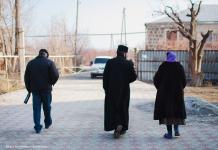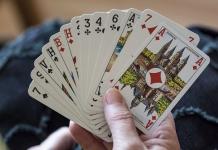What stages in its development does society go through? Before answering this question, let us note that its socio-historical development is a multifaceted, extremely complex process. It takes place over a fairly long period of history and presupposes political and legal, economic, intellectual, spiritual and moral and many other components that form some kind of integrity. Many scientists tried to give their own answer to the question of what stages in its development society goes through. In this article, we will look at the main theories and classifications proposed by renowned researchers on this subject.
The specifics of the sociological study of the historical development of society
The sociological study of this concept is not easy, firstly, because it is difficult to single out the actual social aspect. Moreover, it is not easy to define the very content of the concept of "social development" in the course of the historical process. And all this must be done in order to answer the question: "What stages in its development does society go through?" Researchers usually focus their attention on the socio-historical development of a certain social subject. It can be an individual, a certain society (for example, Russian), as well as a group of societies (Latin American, European), a nation, a social group, a social institution (family, education system), a social organization. It can also be a combination of them (national economic enterprises, political parties, commercial and industrial companies). However, we are only interested in the question of what stages in its development the society as a whole goes through.
Civilization and type of society
The greatest interest in sociology is the socio-historical development of societies as integral social units. Of course, it consists of the development of individual classes, social groups, institutions, organizations, communities. However, at each stage of its own, this or that society is an integrity, for the analysis and description of which they usually use different concepts... They can be grouped into two groups - "civilization" and "type of society". These concepts characterize qualitative states at various stages of socio-historical development. They need to be defined in order to answer the question: "What stages does society go through in its development?"
The concept of "type of society"
This concept means a system of structural units (institutions, social groups, communities, etc.) interacting with each other and interconnected on the basis of some social ideals, norms, values common to them.
There are various classifications of types of societies. The most elementary is their division into complex and simple. It was proposed in the 19th century by
Spencer's classification

Answering the question about what stages a society goes through in its development, this scientist put forward the opinion that societies move over time from a state of so-called indefinite homogeneity to the opposite - a certain heterogeneity, with an increase in the integration and differentiation of personality, social ties, culture. Immediately, we note that this division is very arbitrary. Even the simplest society is a very complex organism. It is even less obvious that the societies related to the primitive communal system are organized much easier than, for example, the developed modern one. Therefore, Spencer's classification is highly imprecise.
The division of society into industrial and traditional
However, Spencer was not the only one who answered the question: "What stages does society go through in its development?" One of the most widespread classifications today is the division into industrial and traditional, formulated by O. Comte, C. A. Saint-Simon, E. Durkheim and other sociologists. Usually the concept is used to designate stages of development that are precapitalist. That is, the totality of people at this time does not yet have a developed industrial complex. It is based largely on the agricultural economy. Such a society is socially inactive. From generation to generation, traditional patterns of behavior and forms of life are transmitted practically unchanged. The result of industrialization is an industrial society. It gives rise to urbanization, mass literacy, professional specialization. Such a society relies primarily on an industrial economy. It has a developed system of social-class and production division of labor. It is dynamic, characterized by constant technological and scientific and technical innovations and inventions, and a high level of mobility.
Wallerstein historical systems

There are also other opinions about what stages in its development society goes through. A short answer to this question, based on the opinion of one of the leading Western sociologists of our time, I. Wallerstein, can be given the following. This scientist considers it necessary to isolate historical systems. Each of these systems is based on some type of division of labor. It develops various institutions (socio-cultural, political, economic), which ultimately determine the implementation of the basic principles of this system, the socialization of groups and individuals. Wallerstein argues that different kinds of historical systems can be found. One of them is the capitalist one that has existed for about 500-600 years. world economy(modern). The other is the Roman Empire. The third was represented by the Maya structures located in Central America. There are a huge number of small historical systems. From the point of view of this researcher, the real change in society occurs when the transition from one historical system to another begins. At the same time, its disappearance is not determined by the action of various internal contradictions. The inefficiency of the way of functioning opens the way to other, more perfect ways.
The identification of different types of societies allows researchers from different points of view, from different positions and in different aspects to study socio-historical development and consider it as a multifaceted process, with many indicators and characteristics.
The main socio-historical types of societies

If we summarize the above and other opinions of sociologists, as well as philosophers, economists and historians, we can briefly single out, in a schematic form, the following socio-historical types (stages of development of human society):
Hunter-gatherer communities that exist through the collection of the gifts of nature and hunting;
Agricultural societies carrying out artificial cultivation of plants and land cultivation;
Breeding based different types livestock animals;
Based mainly on handicrafts and agricultural production, traditional (it is in them that cities, state power, classes, trade, writing);
Industrial societies based mainly on industrial machine production;
Replacing industrial post-industrial ones.
In general, this typology, which describes the main stages of the development of society, is widely accepted by representatives of the humanities and social sciences of various countries. It is often used to build more specialized and detailed
The concept of "civilization"
In sociology, social philosophy and cultural studies, the types of cultural and social structure of societies are also distinguished using the concept of "civilization". However, if the type of society primarily emphasizes the nature of social ties, relations and structures, then civilization as a concept emphasizes the spiritual, socio-cultural, religious characteristics of various societies.
Cultural and historical type
Close to this concept is also the term proposed in the 19th century by N. Ya. Danilevsky, a Russian sociologist and philosopher ("cultural-historical type"). This researcher, among the first thinkers, tried to get away from the generally accepted image of socio-historical development only as a linear, flat process. He believed that peoples form cultural and historical types that differ significantly from each other. He considered the main criteria for identifying the types of "affinity of language", territorial, religious, psycho-ethnographic unity, political independence, forms of economic activity, as well as some other signs. Danilevsky (pictured below) included Assyro-Babylonian, Chinese, Egyptian, Iranian, Indian, Greek, Jewish, Arabian, Roman, European (German-Roman) among these types.

Each of them goes through stages of the life cycle in its development, such as origin, development, flowering, decline. After that, a new cultural and historical type is brought to the fore in the development of the history of our planet. According to Danilevsky, the formation of the Slavic civilization has been going on for several centuries. It is they who characterize the modern stage of development of society. He predicted a great future for the Slavic civilization. Danilevsky's concept, despite its political conservatism and a number of theoretical naiveties, is valuable in that it provides a non-linear image of the historical development of society. It presupposes the presence of historical retreats, zigzags, even significant destruction of previously accumulated cultural values.
A. Toynbee's opinion

Later, the idea of cyclical development was continued in the works of O. Spengler, a German philosopher, and especially A. Toynbee, an English historian. According to Toynbee, every civilization (and in the history of mankind he counted 21 civilizations, including 13 main ones) in its development passes a closed one. It moves from inception to death and decay. Toynbee identified 5 main civilizations: Russian, Western, Islamic, Indian and Chinese. He paid special attention to the reasons why civilizations are dying. Toynbee, in particular, believed that the bearer of the life force of a particular culture, its “creative elite,” at some point turns out to be incapable of solving the arising historical and socio-economic problems. It turns into a minority alienated from the population, which dominates it not by the right of authority, but by the right of strong power. Ultimately, the researcher believes, these processes will destroy civilization.
Now you know what stages the society goes through in its economic development according to A. Toynbee.
in Russian sociology

In Russian sociology (as well as in the humanities and social sciences in general) in last years the concept of civilization is becoming more and more widespread when it is required to characterize socio-historical development. This is mainly due to the fact that the Marxist concept, which dominated undividedly in Soviet social science, according to which there are socio-economic formations in history, was rejected by most social scientists as simplified and overly politicized. The concept of civilization is currently used in Russian scientific literature in three main meanings:
The next stage of barbarism in the sociocultural development of society;
Sociocultural type (Russian, European, Chinese, Japanese and other civilizations);
As the highest level of technological, socio-economic, political and cultural development today.
Back in school, we first get acquainted with what stages in its development society goes through. Grade 8 is the time to study this issue. However, at school, this topic is rather superficial. In this article, a detailed answer was given to the question of what stages society goes through. It can be used to prepare for classes and exams, not only schoolchildren, but also students.
Stages of development. The primitive era is the longest period in the development of mankind. It begins with the appearance of mankind on Earth (about 5 million years BC) and ends with the formation of a class society and the emergence of a state (IV-III millennium BC). A significant part of the history of mankind falls on the era of the primitive human herd, when man still practically did not stand out from the animal world. This era ends with the emergence of a modern type of man (about 100 thousand years ago).
The development of a primitive society is divided into several stages, but in general it has the following features:
Low rates of development of productive forces and their slow improvement;
Low rates of development of society;
Collective appropriation of natural resources and production results;
Equitable distribution and social equity;
Lack of private property, exploitation, classes and state.
Several variants of the periodization of the primitive communal system are known in history. Most often they use the archaeological scheme - epochs are associated with the materials from which the tools were made:
Stone Age: 5 million years ago - the end of the 3rd millennium BC e .;
Bronze Age: late 3rd millennium - 1st millennium BC e .;
Iron Age: 1st millennium BC e.
The first state formations arise already at the last two stages, therefore, chronologically the era of primitive society coincides with the era of the Stone Age.
It can be divided into three periods:
1) Paleolithic (ancient Stone Age): 5 million - 12 thousand years BC e .;
2) Mesolithic (Middle Stone Age): 12-8 thousand years BC e .;
3) Neolithic (New Stone Age): 8-3 thousand years BC e.
In different parts of the world, in different tribes and peoples, the emergence of a certain form of labor and social life occurs at different periods. However, they are united by a number of common features: an appropriation economy (use of natural goods) and collective, communal ownership of the means of production.
Economy of the Paleolithic period. The first forms of human economic activity during the Paleolithic period were hunting, fishing and gathering. Archaeological finds indicate that hunting is a small detachment and specialized nature. The spear was the main tool of labor in the hunt, and the hunt was collective. Gathering supplemented the poor diet of primitive man with nutritious grains and roots.
The ability to make tools of labor was the main feature that distinguished humans from animals. The first stone tools, according to archaeologists, appeared about 2.5 million years ago. They could cut off a branch, remove the skin from a killed animal, split a bone, or dig a root out of the ground. There were few such weapons; the person who made them was called a skilled person (homo habilis).
A new type of pre-humans - Pithecanthropus (monkey-man) - appeared almost 1 million years ago. Despite the coat, low forehead and strongly protruding superciliary arches, it was a bipedal creature. The Pithecanthropus brain had a volume of 900 cubic meters. cm, and the hands were able to perform the simplest labor operations: chopping, cutting, planing, digging, killing animals, skinning, separating carcasses. During this period, archaeologists distinguish a set of tools from 30-40 functions. In the Middle Paleolithic era (200-40 thousand years BC), triangular, plastic and pointed tips, chops, spears appeared.
At the time when the Pithecanthropus lived, the ice age began, which further accelerated the development of work skills, the ability to think, plan their activities in order to survive in various climatic conditions. Pithecanthropus lived in the cold regions of Northern China and Europe, in the tropics of Java, in the deserts of Africa. They existed in relative isolation, did not meet with each other, and were separated by genetic barriers.
Only with the formation of glaciers did the level of the World Ocean drop and land "bridges" arose between the land areas separated by water, through which people were able to penetrate into new territories. The harsh climate taught people to use natural fire, and then to extract it, which immediately separated them from the natural world. In their dwellings there were bonfires, lined with stone, where a bonfire burned day and night, on which food was cooked. The use of fried and boiled food contributed to human physiological changes. Fire began to be used for protection from animals and for hunting. Getting fire became an important economic task, and the fight for fire was often the cause of conflicts and clashes between neighboring human groups.
About 200 thousand years ago, the Neanderthal type of man was formed - Homo sapiens. She was not much different from modern man(the brain volume in some Neanderthal forms was greater than the average in modern humans), although it was still coarse, had a low forehead and a protruding chin, its brain structure remained relatively primitive.
With the end of the Ice Age and the establishment of a climate close to modern (35-10 thousand years ago), the establishment of modern man began. The use of fire for cooking, the improvement of tools, as well as the first attempts to streamline inter-sex relations significantly changed the physical type of a person. It was at this time that the process of anthropogenesis was completed - the transformation of a human being into a Homo sapiens. It was then, probably, as a result of adaptation to the natural environment, that the existing and now Caucasian, Negroid, Mongoloid race were formed. People settled on all continents, penetrated Australia and America. The total population density was 0.1 people per 1 sq. km, and its population hardly exceeded 2-3 million people.
Along with the improvement of hunting tools, which remained the main activity, a stone grain grater, pistils for grinding grain, nuts, roots, and flint tips appeared. They began to work more thoroughly on the bones. Among the archaeological finds are daggers, spearheads, harpoons, needles with an eyelet, awls, etc. Bone products were decorated with carvings - ornaments or images of animals, which, in the opinion of primitive people, gave special strength. Today, archaeological museums display about 150 types of stone and 20 types of bone tools from the Paleolithic era.
It was during this period that the settledness of people, certifying the traces of trivial-hour settlements of this period, was found. People lived in them from several months to hundreds of years. Dwellings were dugouts, huts, portable tents - plagues, as well as large communal houses. Decorations have been found that make it possible to recreate the clothes of that time.
In the late Neolithic era, the original society was replaced by a clan community, which united people of the same clan. She had collective property and ran the economy on the basis of the age and gender division of labor and simple cooperation. Men were engaged in hunting, fishing, making tools, and women - in gathering, cooking, keeping the fire, raising children.
Before the birth of the family, the genus was established on the maternal side. Women during this period played a leading role in the economy (matriarchy). However, the real power in the community belonged to the elders - men aged 40-50 - and was based on their experience, strength, intellectual and emotional preferences. It was an exception when they did not listen to the advice of the leaders or did not follow their orders. Matriarchy existed until the time of the spread of metal.
At the end of the Paleolithic, the number of large mammals sharply decreased, and some species completely disappeared. This led to a deliberate limitation of population growth. It so happened that the interval between births was at least three years. If children were born more often, they were killed, and often one of the twins was also killed. For the first time in the history of mankind, social prohibitions appeared - marriage in the middle of a clan (exogamy). The social organization of the community has become clearer: adult men, women and children. The transition from childhood to adult group accompanied by special ceremonies. These circumstances probably changed the economic life.
Economic development of the Mesolithic tribes. The Mesolithic was characterized by the retreat of the glacier to the north and the advances, according to geologists, of the modern era. Hunting and climate change have led to a change in fauna. The disappearance of some of the large animals forced to improve hunting tools. The most important achievement of this era was the invention of the bow, a weapon for long-range combat, which made it possible to more successfully hunt animals and birds. People have learned to make snares, trellises, fences, hunting traps. Fishing began to develop, which was carried out with the help of harpoons, nets, skeletons. Chiselling boats with a stone ax made it possible to develop the marine animal industry. They began to tame the animals.
The search and development of food sources by the original communities, less dependence on nature led to a decrease in resettlement from place to place. The first signs of the regular collection of some cereals, as well as the settled way of life, are found in Palestine. Here in the X-IX thousand BC. e. there lived hunters and fishermen who no longer roamed, but long time lived in one place. They lived in settlements with small round houses, buried a little in the ground and plastered with clay mixed with sand and pebbles. The floor was covered with stone slabs. In the Mesolithic era, the settlement of Eurasia was completed. People penetrated further and further north to the shores of the Baltic and the Arctic Ocean. Pictography (Malyunkov's letter) was born. People have learned to record, store and transmit information.
In the Mesolithic era, a significant amount of information, knowledge on meteorology and medicine was accumulated. Craniotomy and amputation of injured limbs were known. Hypnosis was widely used.
During the Mesolithic period, branches emerged within the races: in the Caucasian - southern and northern, in the Mongoloid - Asian and American, in the Negroid - African and Australian. The process of forming peoples began. The difference in the pace and nature of the economic development of individual human communities was growing.
The Neolithic became the period of completion of the transition to higher forms of appropriation and transition to a reproduction economy, i.e. based on the production of material goods necessary for the life and work of people. The structure of the appropriation economy was fundamentally different from the structure of the reproduction economy. The main sectors of the economy were agriculture, cattle breeding and handicrafts. For the first time, it became possible to receive an additional product constantly, and not occasionally, as before.
Neolithic revolution. The development of labor productivity was facilitated by the first (agriculture and cattle breeding) and the second (the separation of crafts from agriculture) social divisions of labor, which, in turn, contributed to the individualization of labor, the emergence and development of private property. These transitions in the historical and economic literature are called the Neolithic revolution.
The transition to the cultivation of the land became a progress in the development of the productive forces. The farming techniques and techniques were very primitive: they dug up the earth with wooden sticks and hoes; sting with sickles with a flint blade; the grains were ground on a stone slab or in grains. During the Neolithic period, people mastered almost all agricultural crops known in the modern period. It is believed that the first centers of agriculture as an independent branch of the economy originated in Western Asia. Modern archaeological and paleobotanic finds give grounds to speak of four independent most ancient foci of origin cultivated plants:
1) Western Asia, where already in the VII-VI millennium BC. e. cultivated field cereals - barley and wheat;
2) the Yellow River basin, where in the IV-III millennium BC. e. cultivated Chinese millet (chumiza), rice, gaoliang;
3) Central America, where in the V-IV millennia BC. e. began to grow beans, peppers, and in the III millennium BC. e. - maize (corn);
4) the Peruvian highlands, where in the III millennium BC. e. cultivated peppers, cotton, beans and other plants.
Agricultural technology was gradually improved. In the IV millennium BC. e. in agriculture, such forms have arisen as the cultivation of permanent plots and deposits of non-irrigated (rainfed) and even irrigated (irrigated) lands. In a number of regions (in Europe, Western and Central Asia), there has been a transition from manual farming to arable farming.
Cattle breeding became an important branch of the economy, although it was distributed unevenly and was formed from hunting. Important role in its development, children played, who fed the babies of wild animals and, playing with them, tamed them. The first domestic animals were sheep, goats, cows and pigs. Cattle (shepherds) tribes lived in the steppes of North Africa, Arabia, Central and Central Asia. Europe was a zone of predominantly vegetable farming with style cattle breeding.
The oldest craft was pottery. Earthenware has made it possible for man to greatly improve the preparation and storage of food. Improvement in food technology was becoming an important factor economic development... The potter's forge (kiln for firing clay products) was first made in the East. The potter's wheel has been known since the 4th millennium BC. e. Its appearance significantly increased labor productivity and improved the quality of pottery.
Another ancient craft was weaving - making fabric on a hand-held loom. For this, flax, nettles, and other crops were grown, fibers were separated, bitched, spun, ropes and threads were produced. Thin and coarse fabrics for sewing clothes and household needs were made of threads, sacks and bags were sewn.
In the territories of modern India, Egypt, Asia Minor in the VI-IV millennia BC. e. metallurgical production was born. The first metal that attracted people's attention was copper, probably native. Its strength was inferior to stone, but when heated, it was possible to make needles, an awl, a fish hook from it. Various decorations were made from copper. In the III millennium BC. e. already knew a harder metal - bronze (an alloy of copper with tin, lead, which gave it hardness). It quickly spread throughout the ancient world, except America. First, metals were smelted on a fire, then the ores were heated in a mixture with charcoal in smelting furnaces.
The technique of stone processing has advanced significantly. It was polished, cut, drilled. Stone tools - a hoe, grain grinder, mortar, blade for sickles, knives, daggers - were made of flint. Needles, awls, spoons were made of bone, including ivory.
On the borders of tribes with different economic orientations, and later within the tribes, exchange developed more and more intensively. However, economic practice has not yet developed a universal equivalent. We can only talk about the emergence of commodity production and circulation, that is, about the creation of individual products in quantities that exceeded the needs of the family and community and was intended for exchange with other communities, about the formation of market relations, albeit in a rather primitive form. The development of exchange stimulated the improvement of the productive forces.
With the transition to settled life, the number of people who, living nearby, began to mix, changed dramatically. The community of hunters was small, about 20 or a little more. She could only grow if she had an adequate supply of food. The transition to a manufacturing economy led to a noticeable increase in the size of communities, to the emergence of a territorial community, which consisted of permanent settlements, numbering dozens or even hundreds of residential buildings, religious buildings, workshops. Clay buildings served as housing. At the turn of the V-IV millennium BC. e. about 80 million people already lived on Earth, and the population density for inhabited territories was from 10 to 100 people per 1 sq. km. For the first time in history, there have been tendencies for families with many children. Life expectancy has increased. The laws of patriarchy are enshrined in society.
Failure to meet the growing needs of man and society, productivity in production led to the displacement of stone tools, so they exhausted their potential in the IV millennium BC. e. The transition to the next stage began - the Neolithic (Copper-Stone Age). During this period, the material that was mainly used was metal - first copper, iron, then bronze, from the i millennium BC. e. - alloys of iron and its derivatives, namely cast iron and steel.
The invention and development of fundamentally new materials (bronze), technologies (irrigation systems and plow farming), increased property inequality, means of private property inevitably led to the emergence of classes and the state.
Knowledge improved, the first, still primitive counting systems appeared. It was a bundle of straw, a row of shells, a rope with knots tied around it. In early Europe, stones were usually used for calculations: the words "calculator", "calculation" come from the Latin calculus - stone.
The growth of agriculture and each time more intensive land work contributed to the development of geometric knowledge. The first geographical maps were compiled. At the end of the Neolithic, the wheel was invented and wheeled transport began to develop. Then an event of extraordinary importance took place - the first written language in the history of mankind arose. This became a feature that separated the original history from the era of civilization.
The destruction of primitive society in many regions of the world took place at different times. Models of further economic development were also distinctive. At the end of the 4th millennium BC. e. in Mesopotamia, and then in Egypt, the first states arose.
Story. General history. Grade 10. Basic and advanced levels Volobuev Oleg Vladimirovich
§ 1. The initial stages of the formation of human society
From a skilled person to a reasonable person. Scientists believe that the most important differences between humans and representatives of the animal world are purposeful labor activity (i.e., the manufacture and use of tools), upright posture, and intellectual activity closely related to the presence of speech (language).
In modern anthropology (from gr... the words "man" and "concept, teaching"; the science of the origin and evolution of man) in the long process of man's formation, a number of main stages are distinguished: lat... "Southern" + gr... "Monkey") - great apes, Homo erectus and, finally, Homo sapiens. From the middle of the XX century. in archeology, some discoveries followed others, the number of finds has increased significantly, giving an idea of the initial stages of human development.
In 1974, bone remains were discovered in Ethiopia, according to which scientists reconstructed the skeleton. The creature that lived more than 3 million years ago was named Lucy ?. Her height was only 110 cm, and her weight was 30 kg. Lucy was able to walk on two legs, albeit uncertainly, but had not yet lost the ability to climb trees like a monkey. In the same places, the remains of Australopithecus, who walked on two legs, were found; it was 4 million years ago.
Numerous East and South African archaeological finds have allowed modern researchers to recreate the life of a skilled man who existed more than 2 million years ago. Unlike other species of Australopithecus, a skilled man hunted, switching from exclusively plant food to plant and meat. The soil in its habitats is strewn with crudely chipped primitive stone tools - choppers made of basalt river pebbles. The volume of the skull of a skilled man (775 cm 3) is more than twice that of Lucy's.
Fossil parts of the skeletons of an erect (erect) person, his anatomical features indicate that he, figuratively speaking, was already firmly on his feet. This species, which appeared 1.7 - 1.5 million years ago in Africa, includes the remains of human ancestors found on about. Java - piteka? Ntrop (from gr... the words "monkey" and "man"; monkey-man erectus) and in China - sina? ntrop (from Wed - lat... "China" + gr... "Human").
Homo erectus has learned to adapt to various conditions of the natural environment, especially from the moment when he began to use fire. He made double-sided stone tools up to 20 cm long, strengthened natural shelters convenient for protection from enemies and bad weather, and built huts from woven rods. The appearance of the most ancient man also changed: the volume of his skull increased, his height was already more than 1.6 m.
Homo sapiens: Neanderthal and Cro-Magnon. Homo sapiens of the Neandert? L type - paleoa? Nthrop (from gr... the words "ancient" and "man") - was formed about 250 thousand years ago. Most of the remains of Neanderthals are found in Europe. They got their name from the valley of Neandert? L (Germany), where the first finds were made. The Neanderthal man is characterized by a sloping forehead, an occipital bone ridge, protruding brows (eye ridges), and the absence of cheekbones and chin. Paleoanthropes hunted mammoths, deer and other animals, were well adapted to life in the harsh conditions of the Ice Age, and knew how to build long-term dwellings.
The remains of a human of a reasonable modern type - Cro-Magno-nza - were first discovered in the Cro-Magno-n grotto in France. At present, similar finds have been made in many places in Europe and Western Asia. Genetic studies allow scientists to assert that modern man descended from a small group of people (population) that presumably lived in East or South Africa 130-60 thousand years ago.
Neanderthals and Cro-Magnons existed for a long time in the same territories and were two subspecies of Homo sapiens. Until recently, it was believed that the Cro-Magnons, who appeared in Europe about 40 thousand years ago, are the direct descendants of the Neanderthals. According to modern scientific concepts, the Neanderthal could not compete with the more inventive Cro-Magnon, who is probably involved in the disappearance of a competitor in the same ecological niche (in Europe - 35-30 thousand years ago).
Image of a bison. Upper Paleolithic. Altamira cave. Spain
The formation of a clan society and the emergence of spiritual culture. In the process of human formation, two interrelated processes are distinguished: anthropogenesis? S (from gr... words "man" and "origin") - the formation of a person as a biological species in the course of the development of his labor activity and speech, as well as the forms of organization of social life, in which collective labor and intellectual activity develops, a cultural environment is created, and sociogenesis (from lat... "Society" + gr... "Origin") - the emergence of social relations between people.

Venus with a goblet. Bas-relief. Upper Paleolithic. Dordogne. France
In the Paleolithic era? Ta (from gr... the words "ancient" and "stone"; Ancient Stone Age), the groups of hunters and gatherers were small: an average of 25 people. These communities were part of larger associations, numbering 200 - 500 people.
Cohesion was facilitated by family ties and the need in some cases to act collectively, and for this, members of a large association (clan) had to possess such qualities as solidarity and tolerance towards “their own”.
Scientists judge the formation of the spiritual culture of primitive people by the surviving burials, ritual objects and works of art - figurines, cave and rock paintings, ornaments. Modern researchers distinguish two directions in culture: the first is associated with the emergence of magical rites and primitive beliefs (cults of natural phenomena, animals, ancestors), and the second is artistic (aesthetic). The emergence of funeral rites, hunting magic and the birth of primitive art took place in the late Paleolithic era.
Resettlement of humanity. Races and languages. About 40 thousand years ago, a modern-type man settled in Europe, occupied most of Asia, reaching its deep and marginal territories, and penetrated into Australia. The latest archaeological discoveries on the American continent indicate that ancient man moved to Alaska from Asia from the Chukchi Peninsula: the traces of his stay in America clearly indicate the movement from north to south. About 18 thousand years ago, the continent was already mostly inhabited.
The results of adaptation to life in different natural and geographical conditions were isolation between groups of people and the emergence of races. Representatives of different races differ from each other in hereditary biological characteristics, primarily in appearance (type of face, hair, skin color, etc.), as well as some biochemical characteristics of the body (for example, the ratio of blood groups). At the same time, no racial differences were found in the structure of the brain, intellectual capabilities, mental data. At present, science distinguishes between the main, or large, races - Caucasian, African -oid, Mongoloid (including the American Indians), Australoid and numerous small races, differing from each other in appearance within the characteristics of the same great race.
Simultaneously with the resettlement of man and the growth of the population, there was an increase in the number of linguistic communities. Groups of people who spoke the same language split over time and formed new groups. Gradually, dialects diverged so much that they became independent languages, remaining more or less close at first. But often there was a break in their family ties, and then the language groups moved away from each other.
Certain families of proto-languages correspond to the currently existing language families. Scientists believe that 40-30 thousand years ago there were no more than a dozen such macrofamilies. Modern languages differ from their distant predecessors in the same way as primitive society from subsequent civilizations.
Neolithic revolution. The post-glacial warming took place about 12-10 thousand years ago. Gradually, climatic conditions close to modern ones were created on Earth, new landscapes were formed. Where before the ground was covered with grass and mammoths lived, forests have grown; in warmer regions, subtropical and tropical natural zones have formed. Neoli man? Ta (from gr... the words "new" and "stone" - the new stone age) adapted to the emerging ecosystems, invented new techniques and methods for the extraction and processing of food, the use of natural resources.
In the Neolithic era, fundamental changes took place in the life of ancient people. Along with hunters, fishermen and gatherers, the first farmers and pastoralists appeared. Man was no longer content with what nature provided him in a finished form; he began to grow useful plants, domesticated some animals and birds. Scientists called this revolution in people's lives neolithic revolution.
Almost all modern species of cultivated plants and domestic animals appeared precisely during the period of the Neolithic revolution. In the zone of the earliest agriculture and cattle breeding (9-7 thousand years BC) - in Western Asia (Mesopotamia, Palestine, Syria, the southeastern part of Asia Minor) and Egypt - began to grow barley, wheat, peas, lentils , dates and other crops; domesticated goats, sheep, pigs, cattle, waterfowl. Following Asia Minor and Egypt, the transition to a manufacturing economy took place in the Yellow River basin (China), in India and Southeast Asia.
Depending on the natural and geographical conditions, cultures evolved that correlated with different types of economy. The oldest economic and cultural types there were communities of hunters, fishermen and gatherers that remained for a long time in the forests of temperate and tropical climates. In places favorable for the cultivation of cultivated plants, an economic and cultural type of hoe, manual farming arose. In the steppe expanses, nomadic cattle breeding developed.
Changes in lifestyle and culture. The Neolithic is characterized by continuous and rapid improvement of tools and technologies in comparison with the Paleolithic. During this period, new methods of stone and bone processing appeared: drilling, sawing, grinding, polishing, processing of sharp edges; microliths are spreading? you are small cutting silicon plates of a geometric shape, which were used as arrowheads or inserted into the grooves of wooden and bone tools; fish hooks and harpoons were made from bone and horn.
The specialization of tools of labor developed: hunting weapon(dart and arrowheads), tools for butchering animal carcasses, wood and bone processing (knives and scrapers). Composite (combined) products were widely used: hammers, axes, tesla, hoes, as well as throwing tools. With the invention of the onion, hunting became more productive, and with the introduction of the hoe and shovel, manual farming (both dry land and irrigated).

Stone millstone. Neolithic
In the process of making tools, a high level of processing of stone, bone, wood was achieved. Over time, people have learned to change qualities. natural materials... For example, when wood was burned on fire, it acquired strength and hardness, just like clay products. Initially, they were molded by hand, but the invention of the potter's wheel made pottery easier and more sophisticated. The advent of pottery made it possible to cook food.
Changes in production and life have led to the transition to a sedentary lifestyle and a significant increase in the population. In one place, people could now live for many centuries, which, in turn, entailed the need for the construction of dwellings, storage facilities for agricultural products, premises for keeping livestock. In the Neolithic settlements, the specialization of economic activity can be traced. Along with farmers and shepherds, there were people engaged in the manufacture of stone tools, potters, weavers.
Archaeological excavations of the first large settlements in the history of southeastern Turkey (Chata l-Guyu? K), Palestine (Jericho), as well as in the middle reaches of the Euphrates River tell about the achievements of the people of the Neolithic era.

Great goddess. 75 c. BC e. Chatal-Guyuk. Turkey
The changes also affected the spiritual life of people. The most pronounced cult in the Neolithic era was the cult of fertility, since the well-being of people depended on the harvest and the conservation of livestock. The idea of the mother goddess (Great Goddess) as a symbol of fertility and the patroness of the family was reflected in female figurines and paintings on ceramics. The worldview of man during this period was animistic (from lat... “Soul, spirit”): people animate objects of the surrounding world (trees, animals, water, stones) and natural phenomena (thunderstorms, floods, earthquakes, etc.).

Megalithic structure (cro? Mlech) Stonehenge. Neolithic. Great Britain
In Asia Minor, the Neolithic revolution was mainly completed by the turn of the 7th - 6th millennium BC. e. The transition to a manufacturing economy in Europe - on the Balkan Peninsula - dates back to this time. In the northern part of Western Europe, it spread only by the middle of the 4th millennium BC. e. The population of Western Europe in the Neolithic era was made up of inhabitants of agricultural and cattle-breeding settlements, small in comparison with Western Asia.
The transition to a productive economy and more advanced tools of labor led to the cohesion of clan communities, the growth of ties between them, which, in turn, entailed the formation of tribal associations. A characteristic indicator of the change in the socio-political organization of settlements was their hierarchical structure: the largest formed a center around which smaller settlements were located.
The transition from the use of stone tools to metal is characterized by the emerging tribal organization of society. This period was called Eneoli? Ta (from lat... "Copper" + gr... "a rock"). Most of the tools remained stone, but copper tools appeared along with them. IV - III millennium BC e. - active time migratory the movements of tribes, the settlement of Europe by speakers of Indo-European dialects.
The beginning of the Bronze Age, which replaced the Eneolithic and was characterized by the use of bronze - a hard alloy of copper and tin - in Europe is attributed to the turn of the 3rd - 2nd millennium BC. e. The cultures of this period were concentrated in three southern regions: on the Balkan Peninsula (preceded by the Cretan-Mycenaean civilization), the Iberian Peninsula and on the territory of the Caucasus.
The progress of human society encompassed all areas of its development - the improvement of tools and technologies, dwellings and settlements, language and thinking, the complication of the structure of society itself and its spiritual culture. The greatest revolution in history was the transition from an appropriating economy to a producing one, from stone tools to metal ones.
Questions and tasks
1. What is the difference between a skilled person and a homo erectus?
2. What are the human races? How did they come about?
3. Discuss in the lesson how you can explain the simultaneous existence on the same territory of different species and subspecies of the ancestors of modern man, under what conditions the new kind or a subspecies can supplant the previous one.
4. Formulate your definition of the "Neolithic revolution". Explain why the revolution and why the Neolithic.
5. Give reasons for your own opinion why agriculture and cattle breeding have not completely supplanted the economic and cultural type of hunters, fishermen and gatherers.
From the book Who and How Invented the Jewish People author Sand ShlomoI. The first stages of the formation of the Jewish concept of time As you know, from the time of Josephus and up to modern times, not a single Jewish author even tried to write a general history of his own people. Although Jewish monotheism was originally permeated
From the book History. General history. Grade 10. Basic and advanced levels the author Volobuev Oleg Vladimirovich§ 1. The initial stages of the formation of human society From a skilled person to a reasonable person. Scientists believe that the most important differences between humans and representatives of the animal world are purposeful labor activity (i.e., the manufacture and use of tools),
From the book The Ancient City. Religion, laws, institutions of Greece and Rome the author Coulange Fustel de From the book Economics of Stalin the author Katasonov Valentin YurievichStages of formation and development of the state monopoly of foreign trade in the USSR. The stage of "war communism" There are four main stages of the formation and development of the SMVT in the USSR: 1) the stage of "war communism" (1918-1921); 2) the stage of restoration National economy
From the book Ukraine: My War [Geopolitical Diary] the author Dugin Alexander GelevichStages of the formation of Holy Russia Such an identity began to take shape back in the Kiev period, after the Baptism of Russia by the holy Prince Vladimir, Equal to the Apostles. It matured in the Mongol period and reached its culmination in the form of an official teaching about Moscow - the Third
the author Semyonov Yuri IvanovichISSUE I. PROBLEM AND CONCEPTED APPARATUS. THE ESTABLISHMENT OF HUMAN SOCIETY Moscow 1997 UDC 930.9BBK T3 (0) Reviewers: Department of Ethnology, Moscow State University. M.V. Lomonosov Doctor of Historical Sciences N.B. Ter-Hakobyan ISBN 5-7417-0067-5 Bibliography: 38 titles Responsible editor Doctor of Philosophy
From the book ISSUE I. PROBLEM AND CONCEPTED APPARATUS. THE ESTABLISHMENT OF HUMAN SOCIETY the author Semyonov Yuri Ivanovich2. THE INCLUSION OF HUMAN SOCIETY: THE ERA OF COMMUNITY AND PRHISTORY (1.6 - 0.04 mln.
From the book ISSUE I. PROBLEM AND CONCEPTED APPARATUS. THE ESTABLISHMENT OF HUMAN SOCIETY the author Semyonov Yuri Ivanovich2.1.8. The qualitative difference between human society and zoological associations and man from the animal Comparison of the association of higher animals and the early primitive community makes it possible to understand the difference not only between them, but also between the animal world and the human
From the book ISSUE I. PROBLEM AND CONCEPTED APPARATUS. THE ESTABLISHMENT OF HUMAN SOCIETY the author Semyonov Yuri Ivanovich2.3.5. Turning point: the beginning of the formation of society The great ability to productive activity did not provide the individual with any advantages over other members of the association. This is also true if we consider the relationship of the individual only to the external natural
From the book History of Slovakia the author Avenarius Alexander3.3. The beginning of the formation of civil society The creation of the first associations in the form of elite societies (Masonic lodges, scientific societies), on the one hand, and public education (educational), on the other, was the starting point from which in the first half of the 19th century. society
From the book Africa. History and historians the author Team of authorsV.I. Evseenko. Historical science in Guinea: stages of formation and problems Historical science in Guinea has its origins, as in many others African countries, from the traditions of folklore, from oral historical legends passed down from generation to generation
From the book The Creative Heritage of B.F. Porshnev and its modern meaning author Vite Oleg1. Minimum signs of human society First, Porshnev formulates the well-known Marxist formula:
From the book A Course of Lectures on Social Philosophy the author Semyonov Yuri Ivanovich§ 4. Promiscuity and sexual production taboos in the era of the formation of human society (primitive society) The akoit prohibition, which underlies the genus, was a typical taboo. Violation of it, as well as a departure from any classical taboo, was considered as such an action,
From the book General History [Civilization. Modern concepts. Facts, events] the author Olga DmitrievaContradictions in the formation of civil society in England The end of the Napoleonic wars opened an era when England for many years took a leading position in world politics, became the number one power, the industrial workshop of the world, its financial center and standard
From the book My "path to primitiveness" the author Semyonov Yuri Ivanovich13. How the book "The emergence of human society" was written In the candidate's dissertation, along with the problem of the emergence of labor, which was basically solved there, another, immeasurably more complex, was posed - the formation of human society. But only
From the book Comparative Theology. Book 5 the author Team of authorsThe place of positive thinking in Comte's system can only be understood in connection with his famous law of "three stages" or "three states", which he considered his main discovery.
According to this law, an individual person, society and humanity as a whole in their development inevitably and sequentially go through three stages.
1) At the theological, or fictitious, stage, the human mind seeks to find either the initial or final causes of phenomena, it "strives for absolute knowledge." Theological thinking, in turn, goes through three phases of development: fetishism, polytheism, monotheism. This stage was necessary for its time, as it ensured the preliminary development of human sociality and the growth of mental powers. But the claims of theology to penetrate predestination are like the assumption that the lower animals have the ability to foresee the desires of man or other higher animals.
2) At the metaphysical, or abstract, stage, human thinking also tries to explain the inner nature of phenomena, their origin and purpose, the main way of their formation. But unlike theology, metaphysics explains phenomena not by means of supernatural factors, but by means of essences or abstractions. At this stage, the speculative, speculative part is very large "due to a persistent desire to argue instead of observing." Metaphysical thinking, as an inevitable stage, is critical and destructive in nature. Its features are largely preserved in the modern era.
3) The main sign of a positive, or real, or scientific stage is that the law of constant subordination of imagination to observation is at work here. At this stage, the mind abandons the inaccessible definition of ultimate causes and essences and instead turns to a simple study of laws, that is, "permanent relationships that exist between observed phenomena."
Sometimes Comte speaks out not only against the study of "final" causes, but also against the study of causality in general, arguing that science should replace the question of "why" with a question of "how." He himself, however, in his writings often speaks about the causes of certain phenomena.
Social statics and social dynamics
Social statics presupposes, on the one hand, an anatomical analysis of the structure of society at a particular moment, and on the other hand, an analysis of social elements that determine social consensus, i.e. transforming a set of individuals or families into a collective, making a whole unity out of a multitude of social institutions. Thus, social statics leads to an understanding of the conditions for establishing and maintaining the order of any social community and society as a whole.
Social dynamics, in contrast to statics, studies the successive stages that society goes through in its development. Therefore, she focuses on the metamorphoses that take place in the development of society.
Thus, statics and dynamics are related to the terms of order and progress. Progress itself is interpreted as the development of order. The theory of social progress, according to O. Comte, should be based on the history of the human spirit. Progress means development in an ascending line, although it does not include factors of improvement. There are two sets of factors that influence social progress: primary and secondary. The primary, decisive factor is spiritual, mental development. The secondary include climate, race, average human life expectancy, population growth, which determines the division of labor and stimulates the development of the intellectual and moral in man.
Conclusion
Auguste Comte became the founder of not only a new science, but also a truly sociological approach to the analysis of social phenomena and processes. He was the first to pose the problem of the actual conceptual apparatus of sociology, believing that the description and analysis of the structure of society should be carried out in social terms, i.e. in the phenomena of association and its specific products. From the point of view of this approach, O. Comte gives a description of various social systems, social institutions, institutional relationships and stratification - social inequality, i.e. the main aspects of general sociology.
With the advent of O. Comte, social theory acquires an institutional status, acquires the rights of citizenship in the scientific world.
Thus, positivism, represented by one of its foremost representatives, O. Comte, laid the foundations for a new progressive scientific direction, gave society an instrument for knowing itself, and created the prerequisites for the institutionalization of sociology as a science.
In recent years, part of the Russian intelligentsia, which is concerned about the fate of the country, has often made recommendations for the transformation of Russian society. Unfortunately, many people think that Russian social sciences are incapable of understanding social development, and therefore, without being a social scientist, it is possible from the point of view of common sense much better than sociologists, economists or historians to understand the current state of society and find a simple way out of this situation. ... At the same time, it is somehow forgotten that there are tendencies, patterns and even laws of the development of society, the violation of which leads to stagnation, crises and even the collapse and death of states and civilizations, and in order for the recommendations not to be erroneous, first of all, it is necessary to imagine a common social development trend. This message aims to very briefly characterize the stages of social development in order to find a logical perspective in it.
By now, a huge anthropological material has been accumulated, which does not allow any sane person to doubt the origin of man from ape. About 8 million years ago, the division of great apes into species began. About 7 - 6 million years before our time, 3 species of great apes appeared in Africa, at least one of which was a distant ancestor of modern man. If anthropologists are still trying to figure out whether one of them can be considered Australopithecus or only its ancestor, then no one doubts that 4 million years before the present day, “Australopithecus” already existed (“Southern monkey”, of course, anthropoid) who was the ancestor of man. A small australopithecus walked on two legs (although another fossil monkey began to walk on two legs already 9 - 8 million years ago), had a brain about the same size as modern apes, but the ratio of brain weight to body weight was higher ... Simultaneously with Australopithecus, other anthropoid apes, close in reason to man, coexisted, the last of which, apparently, died out only 900 thousand years BC.
Whether Australopithecus was already a man and at what time he turned into a man is still a question. The fact is that it is impossible to draw a clear line between man and monkey. Both modern apes and humans are intelligent social animals. Studies of recent decades have shown that great apes think and are capable of multi-stage abstraction from the goal when it is achieved. They understand the spoken language and are able to learn and (like the deaf and dumb) use sign language, teach it to others and even invent new concepts, compose words from cubes, select and play the right words on a synthesizer, and even know how to joke. Until now, following F. Engels, many believe that man differs from ape in his ability to create one tool of labor with the help of another, but it is often forgotten that the first tools of labor were by no means well preserved in the ground stones. It turned out that humans can create the most primitive tools with the help of other tools, and, observing the Guinean chimpanzees, we saw how they systematically chopped nuts, placing them on a large stone like on an anvil and breaking them with a smaller stone like a hammer. And if a monkey uses a piece of a nut or stone as a tool, then we can assume that the stone tool was made with the help of another. The origin of man is a long evolutionary process, and looking for a clear line is a thankless task. In any case, modern man differs from the modern monkey in a much greater ability to abstract from the goal and the culture created over the centuries. As for Australopithecus, 3.7 - 3.5 million years ago, he began to make "choppers" - coarse stone hand choppers, processed on one side, and 2.6 - 2.5 million years before our time, primitive stone tools became widespread among Australopithecus, which allows us to speak about the emergence of elementary material culture among them.
Anthropologists believe that the descendant of Australopithecus was a "skillful man" who lived 2.6 - 1.5 million years ago, who had a brain of 600 - 700 cubic meters. see, apparently, passed to the most primitive verbal communication and learned to build the simplest dwellings. Simultaneously with him, there were at least 3 more types of primitive people who did not become our ancestors. Approximately 1.9 - 1.7 million years before the present day, a "bipedal man" (archanthropus, Pithecanthropus) appeared, who also settled in Asia, who was considered the first man half a century ago, dating his appearance in 900 - 600 thousand years before AD The brain of the archanthropus was already 1000 - 1100 cubic meters. see, sometimes reaching 1400. Pithecanthropus undoubtedly had the rudiments of articulate speech, he already made many types of tools, built primitive dwellings and used fire.
At the first stage, primitive society was a “primitive human herd,” not much different from the herd of monkeys. At its head was a leader who had established himself thanks to the greatest physical strength. The leader single-handedly led the herd and, guided by sympathy, chose one (less often several) concubines for himself. The next strongest enjoyed less power and chose a wife from among the remaining women. The third one stood even lower in the hierarchy, and so on. In fact, the marriages were paired. Over time, the leaders became not so much strong as intelligent and skillful people, and marriages began to be made up of mutual sympathy. The life of the female half of the herd was usually led by the leader's wife. Other women were also placed on the hierarchical ladder. The upbringing of children was initially carried out by mothers, then the closest relatives, then most of the male or female half of the herd, respectively. Apparently, even in the era of the Archantropians, as a result of the increase in the number of the herd, tribal communities began to stand out in it, sufficient to provide themselves with food, which, in the event of hunting for a large game or defense, could reunite.
Approximately 400 - 300 thousand years ago, another "species" of man appeared - the paleoanthropus (or Neanderthal), more progressive than the archanthropus. The tools of labor of paleoanthropists, thanks to the use of flakes from the broken stone, have reached a great variety. Due to the sharp cooling of the climate, Neanderthals learned to build solid ground dwellings and make clothes. Now tribal communities were headed by elders, elderly and middle-aged people with good everyday knowledge and hunting skills. Perhaps at the same time, as a result of the division of genera, exogamous phratries arose. Members of the phratry perceived themselves as siblings, and members of another phratry as more distant relatives and potential spouses. The phratrial division excluded marriages between children and parents and between siblings. In this era, out of the weakness of knowledge, adherence to ritual actions that go back to imitation, the pressure of stereotypes and the inability to understand the sequence of events, rituals associated with industrial magic arose. Apparently, as a result of the perception of sleep as a reality, ideas about life after death arose, as evidenced by burials with grave goods. Whether the Neanderthals were the ancestors of modern humans or a side branch remains a mystery.
Only 130 - 70 thousand years ago "Homo sapiens" appears, a man of the modern "species", who inhabited all continents (including Europe, where he came about 40 thousand years before our time). Mainly under the influence of natural conditions, racial differences appear in people, which are fully formed in the era of "Homo sapiens". In the Upper Paleolithic era (25 - 10 thousand years before our time), people are grouped into production communities, consisting not only of close relatives, the number of which depends on living conditions. At the same time (or a little earlier), the age and sex division of labor begins. The tools of labor and the material for their manufacture reach a wide variety. Pens are being set up, traps are being made, and boats are allowing greater use of fishing and resettlement. Religious ideas have expanded significantly. There was a belief in the possibility of help from any objects - fetishes. Totemism arose - a belief in kinship with certain types of animals (less often plants or inanimate objects), relations with which were thought of as alliances with strict obligations on both sides.
About 10 thousand years ago, the Mesolithic era begins, known not only for fossil material, but also for a number of socially backward peoples, for example, the Australian aborigines. This time is characterized by microliths - small sharp stone plates that become part of many composite tools. At this time, weapons were invented that could strike at a considerable distance: bows and arrows, boomerangs, blowpipes, etc., scraps and sledges appeared. They know how to get fire in different ways, and the dwelling acquires a hearth. Clothing consisting of at least a belt is widespread. Gathering acquires a specialized character with the systematic collection of plants and their care, which leads to a settled lifestyle, the use of grain graters and various methods of cooking. Means of production dictate the forms of ownership: public ownership of the territory, collective ownership of shared tools, personal ownership of personal tools, clothing, jewelry, etc. Mesolithic - the era of the classical structure of primitive society. The members of the rational size of the communities are included in the clans, those in the phratries that make up the tribe. Clans and communities are headed by elders. Common affairs are decided at the meetings of all adult members of the clan, phratry or tribe, but in fact - by the elders, among whom someone stands out for their authority. The elders keep traditions, but sorcerers who practice magic also lead the rituals. After special training, young men and women undergo initiation rites. An intertribal exchange of missing or desirable items develops, and satisfaction is the measure of its equivalence. In connection with the exchange, friendly relations are established between individual representatives of neighboring tribes. However, strangers, especially little-known tribes, and above all their sorcerers, seem to be potential enemies, who are often attributed to illness, misfortune, failure, etc., and often armed raids are arranged against them for punishment. With the expansion of life practice, knowledge about the world around us also expands, usually limited to the observable space, including both positive and irrational information. Concepts are almost exclusively specific. Counting is done primarily on the fingers and is used to calculate specific items. Abstract concepts are few in number. However, for the preservation and transmission of information, pictography is already appearing and the rudiments of art are already emerging, often associated with rituals (especially with protective magic), but also with aesthetic tastes, such as, for example, jewelry and, in part, ornaments. Religion is developing, which leads to the selection of its experts - sorcerers who conduct various kinds of magical rites. With the development of totemism, the ancestors-totems turn into "cultural heroes" who gave people knowledge and taught them useful actions. Animistic ideas about good and evil spirits and souls of the dead and living are also growing.
At different times from the 9th to the 3rd centuries. BC. most of the world begins the Neolithic era, which is characterized by well-processed polished stone tools. However, in the last half century, the Neolithic begins not with the stone industry, but with the agrarian revolution, which consists in the introduction of a new means of production into circulation - land (fertile soil) and the transition from appropriating, i.e. taking finished products from nature, hunting and gathering farming for land reclamation, that is, for improving the natural fertile properties of the land, farming (with accompanying animal husbandry) or for cattle breeding. The agrarian revolution was not a one-time phenomenon, but a long process, including many years of specialized gathering, although the first planting of an edible plant in a new place can be considered the beginning of agriculture.
Agriculture has not only revolutionized nutrition, allowing to obtain significant food supplies, but had a revolutionary impact on the entire social system. The new sphere of the economy demanded the development of new methods of labor and new knowledge. She also demanded a settlement, and instead of semi-wandering communities of hunters and gatherers, territorial-neighboring communities arose, not necessarily including close relatives. At the same time, different climatic conditions, different degrees of soil fertility, the possibility of irrigation, fertilization and similar factors led to the differentiation of communities, and the different location of cultivated areas, the difference in the productive forces of members of different families, the ability to invent progressive technologies, etc. contributed to the emergence of property differentiation within communities. In turn, property differentiation within the community caused the heads of the most successful families to strive for enrichment, separation from the community, or establishment of power in the community. However, the laws of primitive society, requiring property and social equality and mutual assistance of all members of the community and clan, did not allow them to stand out within the tribe, and a way out was found outside of it.
The fact is that members of the tribe perceived fellow tribesmen as their own, and foreigners as strangers and clearly opposed the concepts of "we" and "they". The further another tribe defended, the less understood its dialect or language, the less they knew about it and the more it seemed hostile. All foreigners, about whom it could be said that they were “not us”, were perceived as people unable to speak like “we”, and therefore they are “dumb” or “Germans”, as the Slavs called foreigners, who considered only themselves to own the word ... Many other peoples have retained self-names to this day, which mean in their languages "man" or "real man", in contrast to foreigners, whom they once did not perceive as such. When the farmers had stocks of grain, yarn, skins, "live meat" and well-made things, the raids of neighbors in order to punish real or imaginary enemies showed the attackers that it was possible, without much effort, to become the owners of food and good things. Temporary clashes between small groups began to develop into permanent wars. Groups of volunteers began to emerge, mainly from young people, periodically plundering neighbors. Particularly distinguished were the so-called "secret male unions" of youth squads, who furnished their preparations for the raids with rituals hidden from all the rest, the uninitiated. At first, such squads, led by the leader, raided, killing innocent neighbors, and returned home with the booty. However, the aggressors quickly realized that it would be better than to receive a one-time benefit, to take only part of someone else's property, then it would be possible to come again. As a result, periodic extortions turned into a polyudye, during which the conquerors traveled around the conquered territory, forcing the local population to arrange feasts for the conquerors and collect tribute. Later, in a developed agrarian society, the tribute resulted in an annual quitrent. Another way of enrichment was the seizure of a part of the land, which the leader and his warriors declared their own, and obliged the conquered foreigners to work on it, receiving the entire harvest. Corvée later grew out of this kind of relationship. As a result of the enrichment of the leaders, warriors and elders, who also began to lead the armed detachments assembled for defense or attack, the household gradually grew, for which not only farmers were required, but cooks, weavers, potters, porters, etc. led to the desire not to kill the conquered, but to take them prisoners in order to use them at home as servants, entrusting them with all the hard work. This is how slavery arose. All three forms of exploitation: quitrent, corvee and slavery, arise almost simultaneously, which is confirmed not only by written and archaeological evidence, but by the direct observation of Europeans over the development of these relations in Melanesian, Polynesian and African societies.
Constant wars in the era of early agriculture led to the creation of tribal alliances: relatively equal, created for defense, or consisting of the dominant conquering tribe and the subordinate tribes of the conqueror. Such unions began to turn into proto-states, and instead of primitive clans and tribes, an agrarian society arose, divided into social classes, estates and castes. The new agrarian society was headed by a monarch with unlimited power from among the leaders or elders. His squad and the elders of the conqueror's tribe (and later part of the nobility of the voluntarily subjugated tribes) formed a class of aristocrats who were obliged to serve the ruler, but who had the right to own land and servants. The servant class was divided into two subclasses. One of them formed peasants, feudally dependent on the ruler or aristocrats, the other - slaves. The artisans of the dominant tribe formed an estate, divided into castes depending on the prestige of the professions, and the peasants - a special caste, obliged to pay in kind (and later monetary) tax to the ruler and aristocrats and perform temporary work for them, but, belonging to the communities and clans of the dominant tribe, they should not have been subjected to daily exploitation and, under favorable circumstances, could move to a higher social group... The conquered foreigners were not recognized as full-fledged people, and therefore they could be forced to pay a large tribute, send an aristocrat to work on the land or turn into a slave in his household.
Already at the beginning of the wars of conquest, the conquerors found an ideological basis for dividing people into unequal groups. Members of secret male unions began to spread rumors that success in the battle with foreigners was due to the fact that the leader and warriors possessed miraculous powers, which the Polynesians called "mana". The more mana, the stronger and more successful the warrior. Tribesmen who do not participate in the war do not fight because they have little mana, and the defeated enemies were defeated because they had less mana or completely lost it. The uninitiated soon believed that the ruler's mana was so great that, due to its inherent power, the “taboo” could turn out to be dangerous and even fatal for those who have little or no mana. Even the objects that the leader touched were so charged with his mana that their taboo became extremely dangerous, therefore the taboo objects: the ground on which the ruler stepped, or the thing that he took in his hands, had to be given to the ruler. Thus, the people were taught that their position was determined by the amount of mana belonging to them, and everything that was captured in the war should belong to the conqueror.
The changes in the social system were reflected in religion as well. Now cultural heroes turned into gods who, like earthly rulers, ruled earthly or heavenly phenomena, natural elements, aspects of life, etc. Since a hierarchy of rulers and leaders was formed in a large alliance of tribes, then among the gods one of the gods of the ruling tribe became the most revered or even the main god. According to new ideas, in accordance with the social status during life and after death, people were supposed to live in a distant afterlife. Moreover, the ruler and aristocrats were provided with bliss, and the rest, in accordance with a virtuous or sinful way of life, were provided with bliss, peace or torment. To serve the new religion, the priesthood was already required, and for his closeness to the gods, he, like other aristocrat, was entitled to lands and servants, and serving the gods contributed to the belief in the establishment of a divine order, which extended to relations between people. At the same time, along with irrational religious beliefs, the growth of rational knowledge, to a large extent associated with the new economy, requiring observation of seasonal changes, the development of new agricultural technologies, the measurement of areas, the construction of buildings, etc., has sharply increased.
Until recently, the prevailing opinion in Russian social sciences was that all the early states up to the fall of the Roman Empire in 476 AD. were slave-owning, and then switched to feudalism. This misconception was based on an inattentive study of social relations in Rome and ancient greece(and there mainly according to Athenian sources) in the nineteenth century. However, if we turn to the relationship not only between the citizens of Rome and their slaves, but between the Romans and Italians and the inhabitants of the provinces, it turns out that feudal relations also existed there, and the Athenian maritime union was not limited to Athens and part of Attica, outside of which also elements of feudalism are easy to spot. As for the rest of Greece, it can be pointed out that in Sparta helots were subjected to the most severe feudal exploitation, in Crete - clarotes, in Thessaly - pines, etc. On the contrary, in the supposedly "feudal" states, slavery persisted throughout the Middle Ages. Slaves ("servos") were known during the heyday of feudalism in England, France and throughout Europe. In the XY - XUSH centuries. Eastern and European countries traded in slaves in the Mediterranean. In Russia, slavery (servitude) is known not only from the Russian truth of the 11th-12th centuries, but officially existed until it was abolished by Peter I, and in fact slavery continues to exist until 1861, since the servants who were torn from the land were no longer serfs, but slaves in the house of its landlord.
The primitive agrarian society that replaced, up to the emergence of a new social system, despite the local specifics, bore the same features. Everywhere it was made up of two antagonistic classes: aristocrats and servants. The aristocracy everywhere once consisted of leaders, elders and vigilantes. Over time, the ruling class was replenished with officials who served the monarch (or a group of rulers) from among (especially the highest) officials who received land and servants from him. As a result, bureaucratic ladders developed in agrarian societies, which later developed into hereditary “feudal ladders”. Bureaucratic ladders meant three types of officials: civilian, military, and religious. For example, you can compare some ancient Egyptian ranks and European ranks and titles of nobility. One of the highest civilian officials in Egypt was the "chatia" - a vizier in many medieval countries of the Middle East, or a minister in Europe. A high court position was held in Egypt by “sejauti biti” (“keeper of the royal seal”, the royal treasurer), in England the prime minister bears the title “first lord of the treasury”. The Egyptian nomarchs, originally descended, apparently from the once independent local rulers, bore the title "repat hatia" - "crown prince". The common Slavic "prince" also once meant the leader of the tribe. The corresponding title "duke", which is widespread in many European countries, is translated from German into Russian as "voivode" and also once meant a tribal leader, a prince. A high position in Egypt was "sa nesu" - "royal son", which was received by the governors of the conquered countries. A corresponding position also existed in the empire of Charlemagne, where it sounded like a "count". This position later became a title of nobility. In ancient Egypt, a part of the aristocracy was meant as "sakh" - a "noble" person, and in Europe, a part of the nobility that was in the service of ordinary nobles was denoted by the title "baron", which corresponds to the original meaning of the Russian "boyar". In the same way, the European "knight" corresponds to the Russian "nobleman", that is, the lower aristocrat serving at the court of the prince, and the ancient Egyptian "ur" - "big" person, which originally meant, obviously, a warrior from the tribe of the conqueror, and "sir "-" noble man ", judging by the determinative, once meant an elder. Be that as it may, but the ancient and medieval aristocrats receive land and servants (serfs and slaves) for their service from a ruler or a titled aristocrat. Other agrarian societies had the same structure with certain peculiarities everywhere. For example, in China, the aristocracy consisted, perhaps, to a greater extent of the bureaucracy than of the tribal aristocracy. In India, where the Aryan aristocracy absorbed a part of the Dravidian and pre-Dravidian aristocracy from a huge number of autochthonous peoples, from which dependent categories were formed, a system of numerous castes was formed, each of which was assigned a certain role in the life of society, but in one way or another it comes down to two main classes.
The agrarian society has developed over time. We improved the cultivation of the land, selected and raised productive plants, raised productive breeds of animals, etc. All this made it possible to obtain significantly more food and raw materials than before for a number of types of crafts. As a result of the development of productive forces by the end of the agrarian era, the food problem was generally resolved, which made it possible to transfer part of the population to another sphere of production. The fact is that handicraft developed along with agriculture. Artisans not only processed agricultural products, but also processed natural resources, producing such items that could not be produced in a subsistence peasant economy. The need for metal, pottery and many other products forced not only the aristocracy, but also the peasants to turn to the market. The demand for handicraft products constantly required an increase in production volumes, and at the final stage of the development of an agrarian society around the fourteenth century. in Italy, in XV in Holland, in XVI in England, etc. manufactories began to emerge, where, thanks to the division of labor, production increased, and the owners of workshops, in which tens and hundreds of people worked, received large incomes. The agrarian society has entered a period of transition to a new social system. Great geographical discoveries of the 15th - 16th centuries. and especially the opening of the New World led to the seizure of territories inhabited by peoples lagging behind the Europeans economically and militarily. Trade with distant countries, the most brutal exploitation of the local population and outright robbery led to an unprecedented flow of gold to Europe and the enrichment of adventurers, merchants and rulers. Now wealthy landowners, manufactures, merchants, usurers and the state apparatus began to willingly invest in manufacturing and commercial agriculture, for example, in the production of wool for cloth making. The landowners who got the opportunity to get rich quickly became now more profitable to free the peasants by leasing the land to them for money, and where serfdom remained (for example, in Russia), to let them go to the cities to work, collecting quitrent or send them directly to work in their factories and workshops. Thus, the growth of productive forces in agriculture, the liberation of the dependent strata of the population and the needs of handicraft production contributed to the transfer of workers from agriculture to the developing craft.
Only as a result of the so-called "bourgeois revolutions" (Dutch 1566 - 1609, English 1640 - 1660 and the most consistent Franco 1789 - 1794), which recognized private ownership of land, the abolition of feudal duties, personal freedom of citizens and a number of civil rights, approved by parliaments (including not only the nobility, but townspeople and partly peasants) by the authorities, etc., at the end of the eighteenth century. certain conditions have been created for unleashing the initiative of entrepreneurs who have gained access to power, and for the transformation of handicrafts into industry. However, for the development of industry and its transformation into the leading branch of the economy, it took the emergence of a new material productive force - industrial technology in the second half of the 18th century, when culture rose to a level allowing one to learn the laws of action of natural forces and use them in practice. If the early agrarian society uses only the power of man and animals and only to a small extent the natural forces of wind or flowing water, then in the second half of the eighteenth century. a revolution takes place in technology with the invention of the steam engine, which for the first time converts thermal energy into mechanical energy.
The use of technology in production that uses the forces of nature allows a much greater increase in productivity than with manual production. With the advent of technology, craft workshops turn into factories and plants, and their owners begin to compete in the acquisition of technology and the rate of production growth. A period of "free competition" of producers begins and society turns from an agrarian to an industrial one. During this period, landless and ruined peasants rush to the cities for factories and factories. Their owners hire workers, paying them relatively stable wages under the contract, which is only a fraction of the cost of labor costs, which makes a profit that goes to expand production and to the owners' own needs and conveniences. By investing in production, a bourgeois city dweller received an income in the output that exceeded the contribution, i.e. money turned into capital, and the owner of the enterprise became a capitalist. At the same time, banking and trade capital developed, which also increased in the process of its turnover. There was a division into two main classes of industrial society: capitalists (or the bourgeoisie) and workers. Under the influence of capitalist relations in agriculture, there was a division into the rural bourgeoisie, unable to cultivate large plots of land on its own, and into "agricultural workers" (farm laborers), that is, ruined peasants or deprived of land. At the same time, the social layer of the intelligentsia has grown, especially in connection with the need for invention and application new technology... Thanks to the transformation of industry into the leading branch of the economy and wealth, the bourgeoisie came to power in most of Europe and became the ruling class. society primitive social agriculture
In the 70s - 90s. XIX century. In most of Europe, in the United States, and later in Japan and a number of other countries, large capitalist associations arose, including enterprises of various industries that make up the production chain, agricultural and processing enterprises, associations combining production, commercial and financial capital, etc. Some of them, having covered most of the production in a particular industry, actually turned into monopolies and began to dictate prices in the market. Industrial societies entered the stage of monopoly capitalism. In order to keep many small enterprises in competition, so as not to lose economic and defense security due to the one-sided development of the economy, the state apparatus began to interfere in the economy, and the market became partially regulated.
Further development of the industrial society led to the fact that the collective sector of the economy, which has existed since primitive times (for example, driven hunting), and expanded in the agrarian society as a "state" (under the monarch), required expansion in the industrial one. In addition to customs, military industry and finance, the transfer of transport and energy networks and a number of industries to the public sector was required. As a result, in the 40s. XX century in a number of countries capitalism has taken the form of state-monopoly capitalism with an unevenly growing state sector. In those countries where the main sphere of the economy remains industry, where the market and money are preserved, and, therefore, the goal of any production is to increase profits, even with one hundred percent state ownership of all means of production, capitalist relations do not disappear, although they acquire the character of state-capitalist. Under state capitalism, the private property bourgeoisie disappears, but does not disappear as such in general, taking the form of a bureaucratic bourgeoisie. In this case, the class of bureaucrats, which is not formally the owner of the means of production, but possessing undivided power, turns into their only manager and the actual collective owner.
In 1917, a revolution began in our country, as a result of which almost all means of production were turned into state property. However, despite the desire to turn them into public property, the state-bureaucratic apparatus, claiming that it controls them on behalf of the people and in the interests of the people, more and more removed the people from managing the means of production and more and more introduced elements of capitalist relations. The fact is that, having proclaimed the construction of a new non-capitalist society, the Soviet government did everything to move to the highest state stage of capitalism. In the future, the party leadership at first did not understand how it was possible to go beyond the framework of capitalism, and then, having created a powerful bureaucratic apparatus, it no longer wanted to give up power and the benefits associated with it. At first, the Soviet government sought to be guided by the Marxist theory, which asserted the need for the transition from capitalism to a new, more progressive communist social formation, although classical Marxism did not explain in detail how this could be done. The party leadership failed to develop Marxism, and later ceased to understand it, refusing to study non-Marxist social concepts, it could no longer analyze the process of contemporary social development. However, to justify its own power, it created a pseudo-Marxist dogma that asserts the infallibility of its already pseudo-communist bureaucratic party, which more and more compromised its original goal. Apparently, some reincarnated people wanted to turn from stewards into owners. As a result, it only remained to withdraw the means of production from state ownership to private ownership, which was done during the "perestroika".
If we consider the trends of modern development, we can see that the main productive force of the future social system is not material, as before, but spiritual productive forces: human intelligence and the knowledge it produces. For this reason, the future society should be an intellectual society, its leading and only class - the intelligentsia, knowledge, and after them all the other means of production should become public property, and the production of ideas, among which the main place should belong to new knowledge, should become the main one. and absolutely prevailing sphere of the economy intellectual society... Class homogeneity will require the replacement of organs of power, first by administration, and then by self-government. Social homogeneity and the absence of power structures will not require the creation of an ideology justifying someone's domination, therefore, the worldview of the members of the new society will rely only on the latest scientific discoveries and strive for true knowledge of man and the natural and social environment surrounding him, in order to make themselves people and environment are more perfect, and life is better.



































